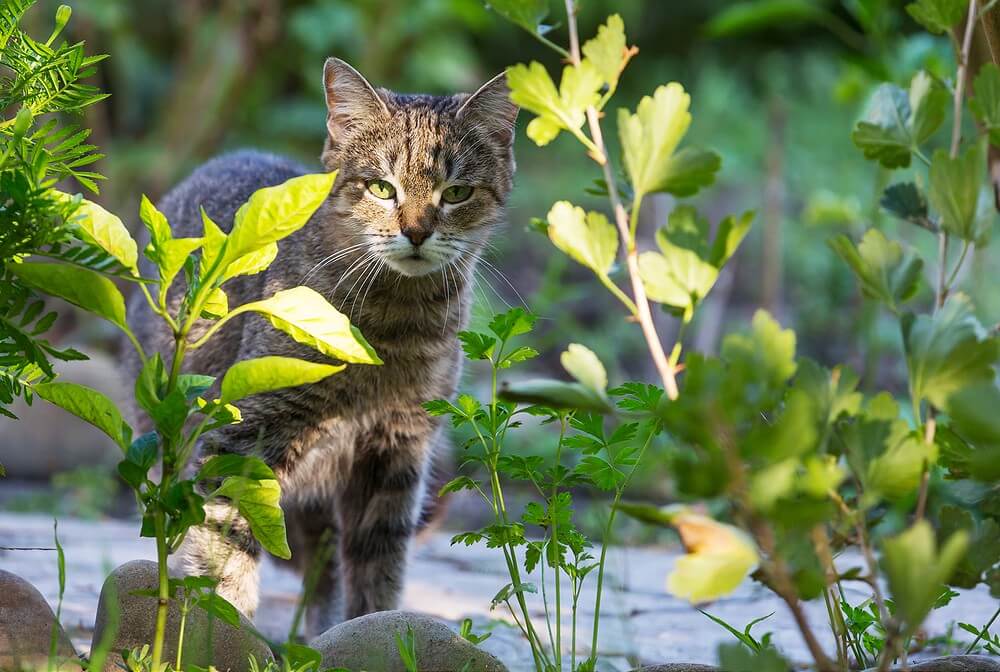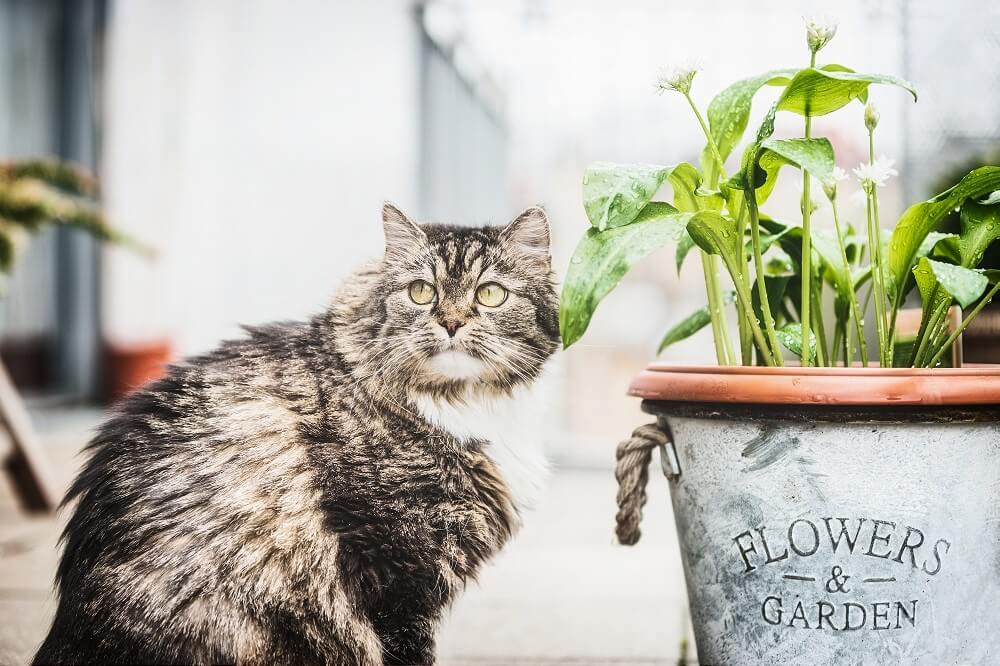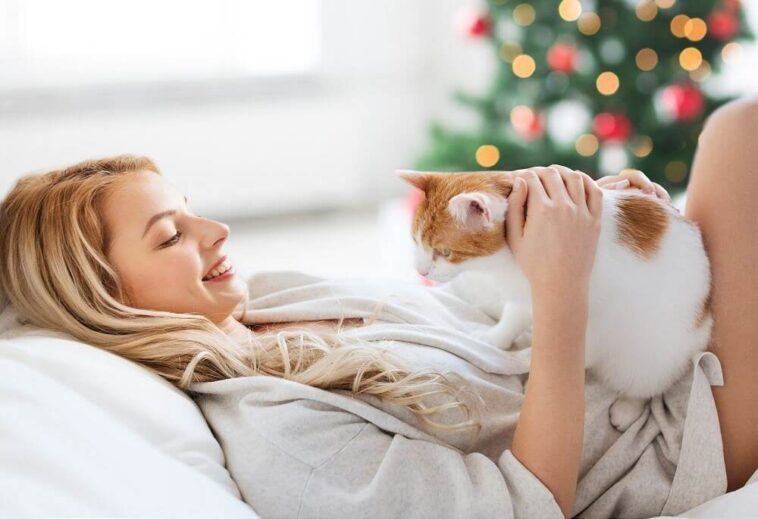In the world of feline companionship, ensuring the safety and happiness of our beloved cats is paramount. Cat-proofing your home is not just a measure of precaution; it’s an expression of love and responsibility towards your furry friends. As independent and curious creatures, cats often find themselves exploring every nook and cranny of their surroundings, making it crucial for pet owners to create an environment that minimizes potential hazards.
Creating a cat-friendly space is more than just a trend; it’s a necessary practice rooted in the well-being of our feline companions. According to recent statistics from veterinary clinics, a significant number of emergency visits are directly linked to household accidents involving cats. It’s a startling revelation that highlights the importance of understanding and mitigating the risks present within our homes.
Statistics or facts about common household dangers for cats
Consider this: common household items can become silent adversaries to our pets. Toxic plants, lurking in living room corners, may seem harmless to us but pose severe health risks to cats. Household chemicals, present in everyday cleaning supplies, can inadvertently become the source of poisoning incidents. Surprisingly, even certain foods we consume regularly can be toxic to our feline friends.

These facts underline the importance of proactively addressing potential dangers. Cats, with their curious nature, may inadvertently come into contact with these hazards, leading to accidents that could be easily prevented. Understanding these risks empowers pet owners to make informed decisions, safeguarding their homes and creating a haven where their cats can thrive without unnecessary risks.
In the subsequent sections of this guide, we’ll explore practical strategies for identifying and mitigating these dangers, creating safe spaces for your cat to enjoy, and fostering an environment that promotes their well-being. By taking these proactive steps, you not only ensure the safety of your feline friend but also enrich their lives in the process.
Section 1: Identifying Potential Hazards
In our quest to create a secure haven for our feline companions, it’s imperative to first identify and eliminate potential hazards lurking within our homes. Cats, with their inquisitive nature, often encounter dangers that might escape our notice. Let’s delve into the common household items that pose risks to our furry friends:
Common household items that are harmful to cats
- Toxic Plants: While houseplants add a touch of nature to our homes, some can be hazardous to cats. Varieties such as lilies, philodendrons, and poinsettias are known to be toxic and can cause severe health issues if ingested.
- Household Chemicals: Everyday cleaning products contain chemicals that can be harmful to cats. From floor cleaners to air fresheners, these substances may lead to respiratory issues or skin irritations upon contact.
- Foods Harmful to Cats: Our kitchens are filled with delights, but some common foods are harmful to our feline friends. Onions, garlic, chocolate, and caffeine are among the substances that can lead to toxicity in cats.
- Small Objects That Can Be Swallowed: Cats often explore their surroundings using their mouths. Small objects like hair ties, rubber bands, or even small toys can pose a choking hazard or lead to intestinal blockages if ingested.

Source: stellaandchewys.com
Understanding these potential dangers is the first step in creating a safe environment for your cat. In the upcoming sections, we’ll explore effective strategies to mitigate these risks, ensuring that your home becomes a sanctuary where your feline companion can thrive without unnecessary health concerns.
Section 2: Creating Safe Spaces
In the dynamic world of cat guardianship, designing secure and enticing spaces within your home is pivotal to ensuring the contentment and welfare of your cherished feline companion. Let’s delve into the art of curating these inviting havens:

Designating cat-friendly zones
- Setting up a Comfortable Sleeping Area: Recognizing that cats spend a significant portion of their day in slumber, it’s paramount to establish a dedicated and inviting sleeping area. Whether it’s a plush cat bed tucked away in a quiet corner or an elevated perch by the window, providing a cozy space tailored for rest is key. Consider incorporating soft blankets or pillows to enhance the comfort of their chosen nap spot.
- Providing Elevated Spaces for Climbing: Acknowledging cats’ innate desire to explore vertical spaces, consider installing cat trees, shelves, or wall-mounted perches at various heights. Not only does this satisfy their natural climbing instincts, but it also offers an engaging way to exercise. Elevated spaces serve a dual purpose, keeping your cat entertained and away from potential dangers on ground level.
- Creating Hideaway Spots for Relaxation: Cats, being creatures of both curiosity and solitude, benefit from designated hideaway spots. Introduce options like cozy tunnels, covered beds, or strategically placed cardboard boxes. These retreats offer a sense of security and seclusion, providing an ideal refuge when your feline friend seeks moments of relaxation away from the hustle and bustle.
By thoughtfully crafting these designated areas, you’re not only cat-proofing your home but also elevating your cat’s overall living experience. In the upcoming sections, we’ll delve deeper into optimizing your home environment, offering practical insights on furnishing your space to align with your cat’s natural behaviors and preferences.
Section 3: Choosing Safe Furniture and Decor
In the pursuit of a shared living space that seamlessly blends aesthetics with feline-friendly considerations, the careful curation of furniture and decor becomes an art form. Let’s embark on a comprehensive exploration of selecting elements that not only enhance your home’s visual appeal but also prioritize the safety and happiness of your cherished cat:
Selecting Cat-Friendly Furniture
- Scratching Posts and Pads: Acknowledging the natural instinct of cats to scratch, integrating purpose-built scratching posts and pads is both a practical and aesthetic choice. These designated items not only fulfill your cat’s need to scratch but also protect your other furniture from unintended wear and tear. Strategically placing these scratching posts in areas your cat frequents encourages their use, safeguarding your home furnishings.
- Cat-Friendly Fabrics and Materials: When choosing furniture, opt for fabrics and materials that align with your cat’s needs. Durable materials like microfiber or leather are resistant to scratches, offering a practical solution without compromising style. Fabrics with tight weaves are less prone to snagging, ensuring longevity and minimizing the impact of enthusiastic scratching.
- Securing Furniture to Prevent Tipping: Cats, in their playful moments, may inadvertently cause furniture to tip over. Prioritize safety by securing tall or potentially unstable furniture to the wall. Anchoring bookshelves, cabinets, or other vertical structures adds an extra layer of stability, reducing the risk of accidents and creating a secure environment for your cat to roam freely.

Ensuring that your furniture and decor are thoughtfully chosen with your cat’s well-being in mind is a proactive step in fostering a cat-friendly home. In the upcoming sections, we’ll delve deeper into strategies for optimizing your living space, offering insights that harmonize both your design preferences and your cat’s safety and comfort.
Section 4: Ensuring a Secure Outdoor Environment
Creating a secure outdoor haven for your feline friend is an essential aspect of responsible cat ownership. In this section, we’ll explore effective strategies to cat-proof your garden or balcony, ensuring a safe and enriching environment for your adventurous companion.
Tips for Cat-Proofing the Garden or Balcony
- Safe Plants for Outdoor Spaces: Elevate your outdoor space by incorporating cat-friendly plants that pose no harm to your curious companion. Consider flora such as catnip, cat grass, or lavender, which not only add greenery but also offer sensory enrichment for your cat. Avoid toxic plants like lilies or azaleas, as these can pose serious health risks.

2. Installing Cat Enclosures or Fences: Create a secure boundary for your outdoor space by installing cat enclosures or fences. These structures provide a safe zone for your cat to explore while preventing them from wandering into potentially dangerous areas. Cat enclosures come in various sizes and styles, catering to different outdoor spaces and allowing your cat to experience the joys of the outdoors without exposure to potential hazards.
By implementing these cat-proofing measures, you’re not only safeguarding your cat but also promoting their well-being and natural instincts. Outdoor time can be a source of great joy for cats, and with the right precautions, it becomes a positive and secure experience.
In the upcoming sections, we’ll continue to explore ways to enhance your cat’s safety and happiness within your home environment.
Section 5: Safety Measures for Indoor Cats
Ensuring the safety of indoor cats involves a combination of strategic measures that address their physical and mental well-being. In this section, we’ll delve into key safety practices to keep your indoor feline companion secure and content.
Microchipping and Identification
Microchipping is a crucial step in safeguarding your indoor cat. In the event that they accidentally find themselves outside, a microchip with your contact information significantly increases the chances of a swift reunion. Pair this with a visible identification tag on their collar for added security. These simple yet effective measures offer peace of mind, ensuring that your cat’s journey beyond the home remains a traceable and safe experience.
Supervised Outdoor Time
While the indoors provide a controlled and secure environment, supervised outdoor time contributes to a well-rounded and happy cat. Create a safe outdoor space where you can monitor your cat’s explorations. Use a harness and leash for controlled excursions, allowing your indoor cat to experience the sights, sounds, and smells of the outdoors while mitigating potential risks. Supervision is key to ensuring their safety and preventing unintended escapades.

Providing Mental and Physical Stimulation Indoors
Indoor cats thrive on mental and physical stimulation. Enrich their environment with interactive toys, scratching posts, and climbing structures. Rotate toys regularly to keep their interest piqued, and consider puzzle feeders to engage their minds during mealtime. This not only prevents boredom-related behavioral issues but also ensures that your cat remains active and mentally sharp within the confines of your home.
By implementing these safety measures and providing enriching experiences, you’re not just protecting your indoor cat — you’re enhancing their quality of life. In the upcoming sections, we’ll explore further ways to optimize your indoor space for your feline friend’s happiness and well-being.
Section 6: Grooming and Healthcare

Maintaining the health and well-being of your feline companion involves a proactive approach to grooming and healthcare. In this section, we’ll explore essential practices to keep your cat in optimal condition, ensuring a happy and thriving life.
Regular Grooming Routine
Establishing a regular grooming routine is not just a cosmetic consideration; it’s a vital aspect of your cat’s overall health. Brush your cat’s coat regularly to prevent matting and reduce shedding. This not only keeps their fur glossy but also minimizes the occurrence of hairballs. Additionally, check their ears for signs of dirt or infection, trim their nails to prevent overgrowth, and brush their teeth to promote good oral hygiene. A consistent grooming routine fosters a strong bond between you and your cat while addressing potential health issues before they escalate.
Veterinary Check-ups and Vaccinations
Regular veterinary check-ups are fundamental to your cat’s health. Schedule annual visits to the veterinarian for comprehensive examinations, vaccinations, and preventive care. Vaccinations protect your cat from common feline diseases, and routine check-ups allow the early detection of any underlying health issues. Consult with your veterinarian to establish a personalized healthcare plan tailored to your cat’s specific needs, age, and lifestyle.

Keeping an Eye on Changes in Behavior or Health
Cats are adept at masking signs of illness, making it crucial for pet owners to be vigilant observers. Monitor your cat for any changes in behavior, eating habits, or litter box patterns. Unexplained weight loss, lethargy, or alterations in grooming habits may indicate underlying health issues. Promptly address any concerns by seeking veterinary advice, as early intervention often leads to more successful outcomes.
By incorporating these grooming and healthcare practices into your routine, you’re not just ensuring your cat’s physical well-being but also fostering a strong and enduring bond. In the upcoming sections, we’ll continue to explore ways to enrich your cat’s life, covering topics such as nutrition, behavior, and creating a stimulating home environment.
Section 7: Training and Positive Reinforcement
Training your cat is not just about instilling house rules; it’s an opportunity to strengthen your bond and create a harmonious living environment. In this section, we’ll explore effective training methods, emphasizing positive reinforcement to encourage desirable behaviors.
Basic Training for House Rules
Establishing clear house rules is the foundation of a well-behaved and contented cat. Begin with basic commands such as “sit,” “stay,” or “come,” reinforcing these rules consistently. Create designated spaces for activities like eating and sleeping, guiding your cat to understand and respect these boundaries. Consistency is key; reward compliance and gently redirect if rules are not followed. Basic training not only facilitates a smoother coexistence but also enhances your cat’s mental stimulation and overall well-being.
Using Positive Reinforcement Techniques
Positive reinforcement is a powerful tool in cat training. Reward desired behaviors with treats, praise, or affection. Cats respond well to positive feedback, associating good behavior with positive outcomes. For example, when your cat uses their scratching post instead of furniture, offer treats and praise. This positive reinforcement builds a positive association, making them more likely to repeat the desired behavior. Keep training sessions short, enjoyable, and tailored to your cat’s individual pace.
Redirecting Undesirable Behaviors
Cats may exhibit behaviors that are undesirable in a home environment. Instead of punitive measures, employ redirection techniques. For example, if your cat is scratching furniture, gently guide them towards their scratching post and reward the appropriate behavior. This not only prevents negative associations but also provides an outlet for natural behaviors. Understanding and redirecting undesirable behaviors using positive reinforcement contribute to a happier and more cooperative relationship with your feline companion.
Incorporating these training and positive reinforcement techniques into your routine not only fosters a well-behaved cat but also strengthens the bond between you and your furry friend.
Section 8: Conclusion
As we wrap up our exploration into ensuring a safe and fulfilling life for your feline companion, let’s revisit key insights, underscore the significance of a cat-friendly environment, and encourage a proactive approach to cat-proofing your home.
Recap of Key Points
Throughout this guide, we’ve navigated essential aspects of cat care, emphasizing the creation of a secure and enriching environment. From identifying potential hazards to grooming routines, training methods, and healthcare measures, we’ve outlined strategies to optimize your cat’s well-being and safety.
Emphasizing the Importance of a Cat-Friendly Environment
A cat-friendly environment isn’t merely a luxury; it’s a fundamental necessity for your cat’s physical and mental health. Creating designated safe spaces, selecting cat-friendly furniture, and ensuring a secure outdoor area contribute to a harmonious and contented life for your feline companion.
Encouraging a Proactive Approach to Cat-Proofing
Taking a proactive stance in cat-proofing your home is a testament to your commitment to your cat’s welfare. By identifying and eliminating potential hazards, providing mental and physical stimulation, and implementing positive reinforcement training, you’re not just safeguarding your cat but also fostering a fulfilling relationship.
Remember, the love and care you invest in creating a cat-friendly environment reverberate through every aspect of your cat’s life. By embracing these practices, you’re nurturing a happy, healthy, and thriving companion.
As you embark on this journey with your cat, continue to prioritize their safety, comfort, and happiness. Stay informed, remain vigilant, and cherish the unique bond you share with your feline friend.
Thank you for accompanying us on this quest to provide the best possible care for your beloved cat. Wishing you and your furry companion a lifetime of joy, companionship, and mutual affection.







GIPHY App Key not set. Please check settings